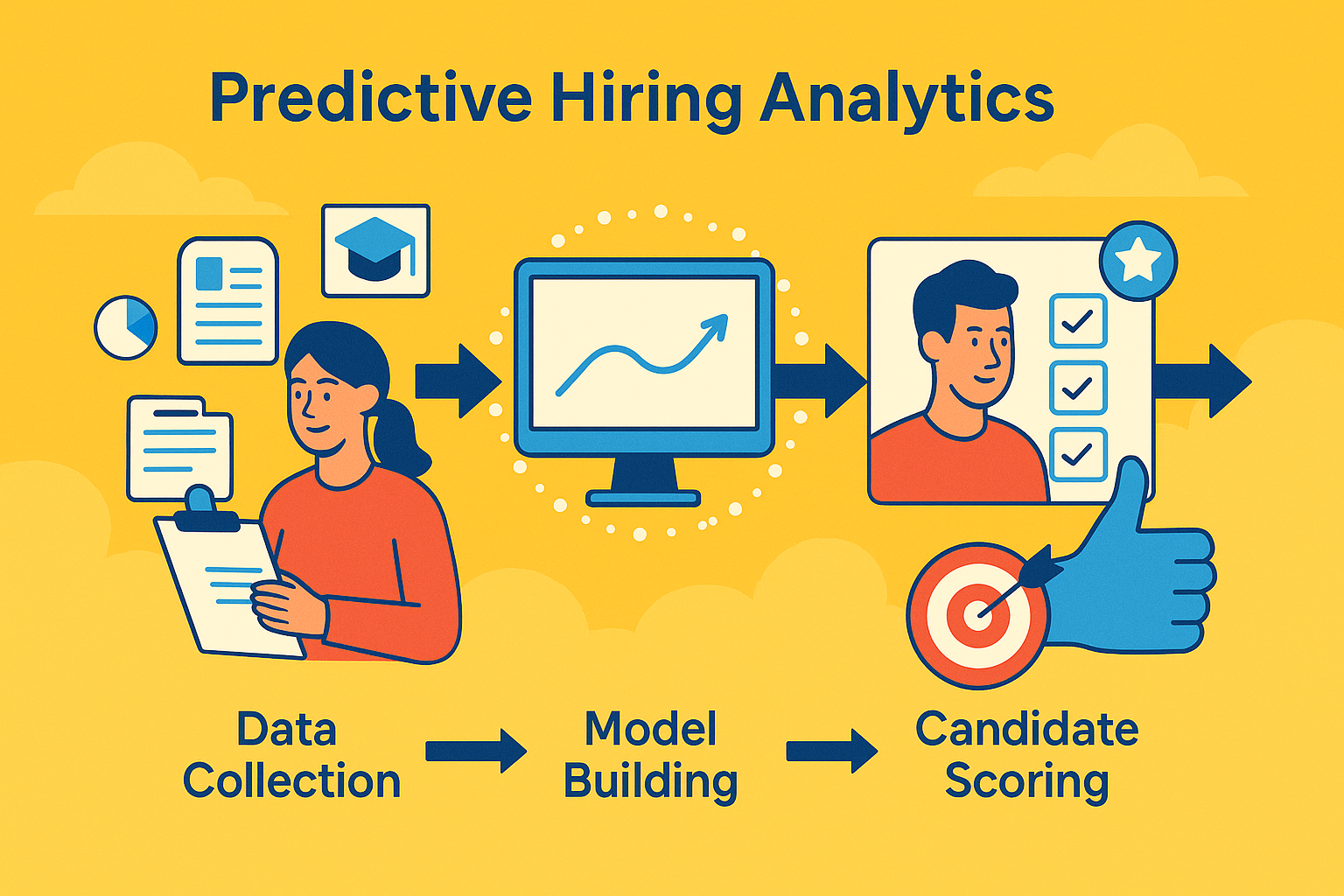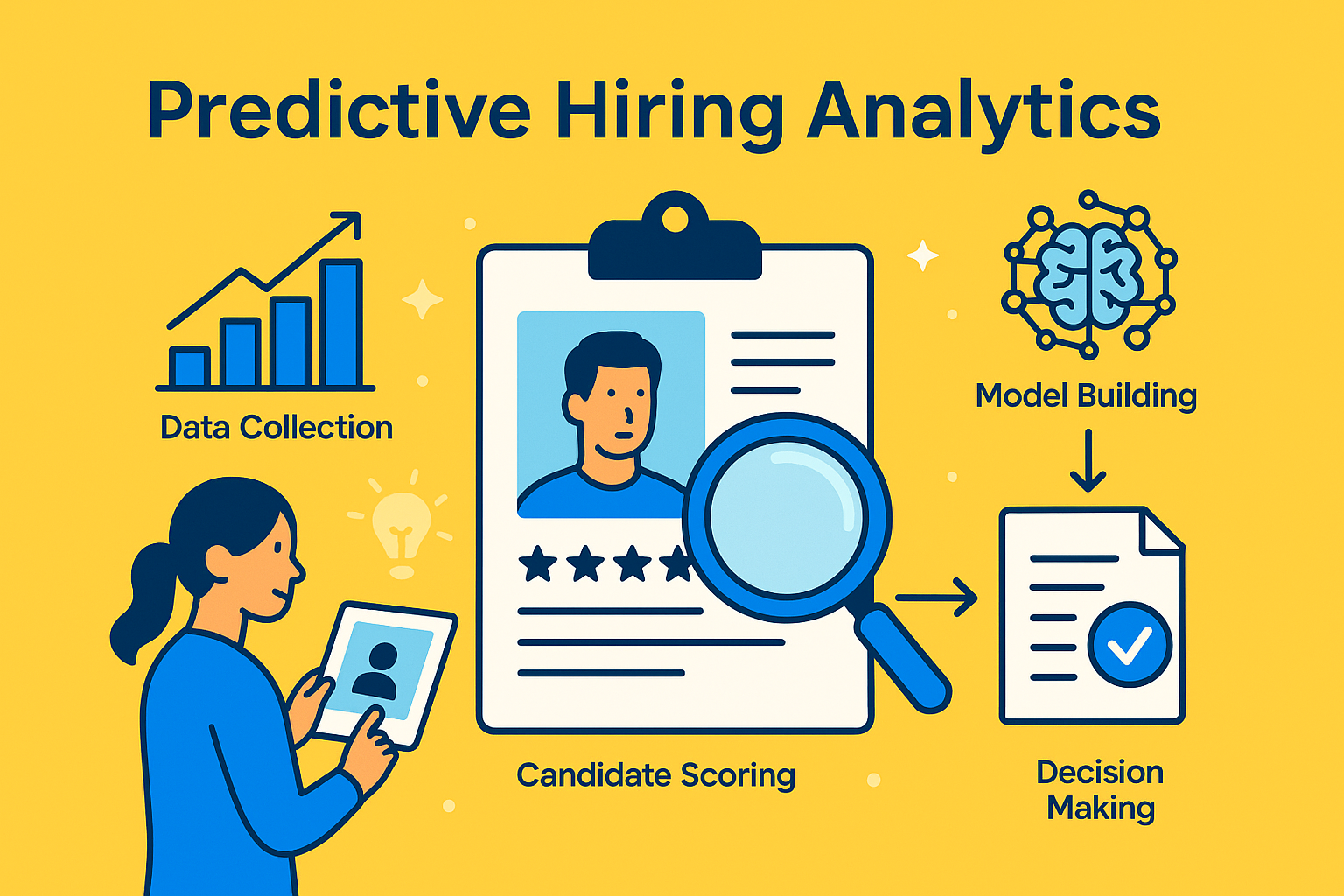Predictive Hiring Analytics: The Future of Smarter Talent Acquisition
In today’s highly competitive talent market, organizations are moving beyond traditional hiring methods. Predictive Hiring Analytics is reshaping recruitment by using data-driven insights to forecast a candidate's future performance, cultural fit, and long-term potential. It empowers HR teams to make smarter, faster, and more equitable hiring decisions.
What is Predictive Hiring Analytics?
Predictive Hiring Analytics refers to the application of data science, machine learning, and artificial intelligence to analyze historical and behavioral candidate data, generating predictions about their future success within an organization.
In short, it moves recruitment from intuition-based to evidence-based decision-making.
Rather than simply screening resumes or relying on gut feelings during interviews, recruiters use predictive analytics to systematically evaluate a candidate’s likelihood of success, longevity, and contribution to business outcomes.
(Related: Learn more about Candidate Screening and how it improves early-stage hiring.)

Key Components of Predictive Hiring Analytics
Data Collection
Structured Data: Resume details, education history, work experience, assessments.
Unstructured Data: Interview transcripts, communication patterns, social profiles.
Model Building
Advanced algorithms (e.g., logistic regression, decision trees, neural networks) identify patterns linking candidate traits to successful job outcomes.
Scoring and Prediction
Candidates are assigned predictive scores for criteria such as performance, retention probability, leadership potential, and cultural fit.
Continuous Learning and Optimization
Predictive models are regularly updated with new hiring outcomes to improve their accuracy over time.
Benefits of Predictive Hiring Analytics
Higher Quality of Hires
Prioritize candidates with a proven likelihood of succeeding and thriving.Reduced Time-to-Hire
Streamline the screening and evaluation process by focusing on the best-fit candidates earlier.Lower Turnover Rates
Predict cultural fit and engagement levels to minimize early attrition.Minimized Hiring Bias
Replace subjective judgments with objective, data-backed insights.Enhanced Strategic Workforce Planning
Forecast future skill gaps and talent needs more accurately.Cost Efficiency
Optimize recruitment spending by targeting the right candidates from the start.
(Further reading: Discover how Skills-Based Hiring boosts hiring precision.)
Practical Applications
Executive Recruitment: Predict leadership potential and long-term impact.
Sales and Revenue Roles: Identify individuals most likely to exceed quotas.
Campus Hiring: Assess fresh graduates based on cognitive skills, adaptability, and growth potential.
High-Volume Hiring: Efficiently screen thousands of applicants for frontline or seasonal roles.
(Related topic: Building a strong Talent Pipeline using predictive insights.)
Challenges and Best Practices
While Predictive Hiring Analytics offers transformative benefits, organizations should be aware of the potential challenges:
Data Privacy Compliance
Ensure adherence to GDPR, CCPA, and other data protection laws when collecting and processing candidate information.Transparency and Explainability
Predictive models should be interpretable so HR teams and candidates can understand the basis of decisions.Avoid Overreliance on Technology
Analytics should complement—not replace—human judgment, interviews, and holistic candidate evaluation.Bias in Algorithms
Vigilantly audit models to ensure historical biases are not inadvertently reinforced through the data.

The Future of Predictive Hiring
As technology evolves, Predictive Hiring Analytics is becoming more sophisticated:
Integration with AI Interview Assistants: Real-time behavioral analysis during interviews.
Dynamic Talent Scoring: Continuously updating candidate profiles based on new inputs and interactions.
Pre-Hire Development Recommendations: Suggesting skill development areas even before hiring decisions are made.
Linking Hiring Data to Employee Performance Management: Closing the loop between talent acquisition and long-term workforce success.
Forward-thinking companies are already embedding predictive insights across the entire employee lifecycle—from recruitment to onboarding, career pathing, and succession planning.
(Bonus: Explore how an Applicant Tracking System (ATS) supports predictive hiring initiatives.)
Quick FAQ
Q1: Is predictive hiring analytics only for large enterprises?
No. While large companies pioneered its use, many SMBs now leverage affordable tools for data-driven hiring.
Q2: Can predictive analytics guarantee a perfect hire?
No system is foolproof. Predictive hiring improves probabilities, but human elements and unforeseen factors always play a role.
Q3: What types of data are most predictive of success?
It varies by role, but common predictors include cognitive ability, adaptability, communication skills, and past achievements.
HR Glossary: Master the Language of Modern HR
From recruiting candidates to onboarding new team members, MokaHR gives your company everything you need to be great at hiring.
Subscribe for more information

